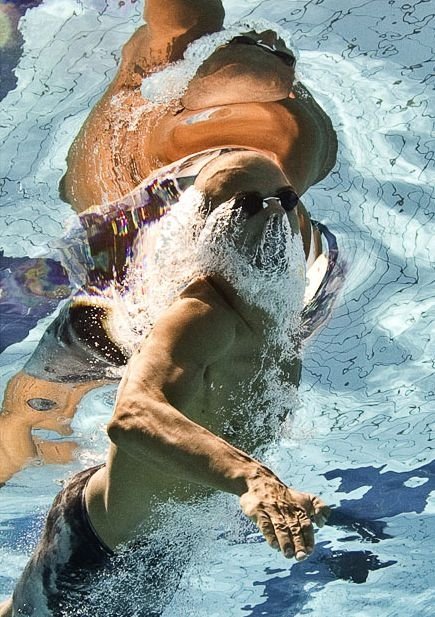|
|
Photos Of Swimmers
|
Male swimmers wore full body suits until the 1940s, which caused more drag in the water than their modern swimwear counterparts did. Competition suits now include engineered fabric and designs to reduce swimmers' drag in the water and prevent athlete fatigue. In addition, over the years, pool designs have lessened the drag. Some design considerations allow for the reduction of swimming resistance, making the pool faster. Namely, proper pool depth, elimination of currents, increased lane width, energy absorbing racing lane lines and gutters, and the use of other innovative hydraulic, acoustic, and illumination designs. The 1924 Summer Olympics were the first to use the standard 50 meter pool with marked lanes. In the freestyle, swimmers originally dove from the pool walls, but diving blocks were incorporated at the 1936 Summer Olympics. The flip turn was developed by the 1950s and goggles were first used in the 1976 Olympics.
There were also changes in the late 20th century in terms of technique. Breaststrokers are now allowed to dip their head completely under water, which allowed for a longer stroke and faster time. However, the breaststrokers must bring their heads up at the completion of each cycle. In addition, a split stroke in the breaststroke start and turns has been added to help speed up the stroke. There have been some other changes added recently as well. Now off the start and turns, breaststrokers are allowed 1 butterfly kick to help increase their speed. Backstrokers are now allowed to turn on their stomachs before the wall in order to perform a "flip-turn". Previously, they had to reach and flip backwards, but this turn is now illegal in all backstroke races. However, a variation of it, known as a "bucket turn" is sometimes used in Individual Medley events to transition from backstroke to breaststroke.
|
|









